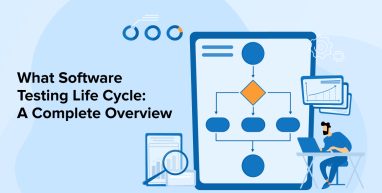
The life cycle means a series of changes that goes one after the other and this is the same when it comes to software testing. In software testing, various components undergo a sequence of changes from the beginning till the end of the process. The software testing life cycle (STLC) is a process that executes various activities when testing any solution. These activities include checking whether the developed software solution meets the required quality standards and specific requirements that the clients listed. If there are any issues or if the requirements are not matched, the software testers work with the software development team to resolve them.
1. What is Software Testing Life Cycle?
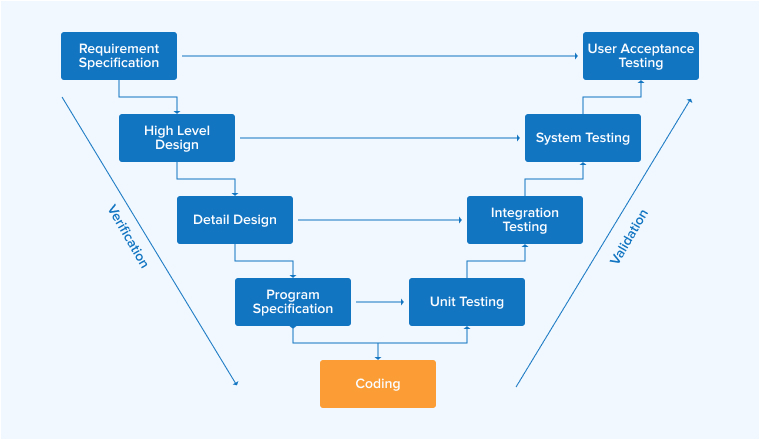
STLC is a series of activities that are performed sequentially during the testing process. This verifies that the software quality and the standard expectations are met. The verification and validation of the app development process are integral components of the STLC process.
There are various stages of STLC such as planning, control, implementation, standardization, and so on. These stages represent key measures of STLC. Apart from this, there is the involvement of other elements for cycle completion criteria such as test strategy, test execution, test coverage, test cases, and test case report in STLC. As a result, if you think STLC has limited functions and operations, you are probably wrong. Because STLC has other responsibilities too other than just testing the developed product. Such as,
- In STLC, testing is performed at all stages, hence eliminating the possibility of maximizing errors. You can identify the errors at the early stages which is more beneficial for improving the process management.
- Secondly, you now have complete control over the quality of the product that’s created, with the testing team making the most of Agile, Scrum, SAFe, and other similar methodologies.
- This will not just ensure quality at the end but also at every corner of the software product.
1.1 Advantages of STLC
By following the STLC, teams can remain organized and ensure they meet all the project requirements. The STLC can used by teams to improve efficiency and consistency by outlining specific objectives, timelines, and limitations for each part of the project.
Among the many benefits of the STLC are:
- Teams can find and fix problems faster if testing begins earlier in the software development process.
- Its organized method guarantees a thorough review of project needs, which increases consistency and efficiency in achieving project objectives.
- Assists in the development of useful tests for software application quality assurance.
- Promotes customer loyalty and business performance.
- Before the integration of additional features, each feature undergoes thorough testing. This ensures that each component is of excellent quality and functions as intended.
- The entire development and testing team benefits from the clearer specifications provided by STLC, as they improve understanding and communication.
1.2 Role of Software Testing Life Cycle
Finding issues within applications effortlessly and documenting them so that developers can identify and fix them is the primary function of STLC. When it comes to testers, STLC is useful for things like:
- Precisely establishing the deadlines for project testing.
- Streamlining and improving the agile process such that it facilitates strong collaboration between teams.
- Thoroughly testing the program before approving it for feature additions.
- Accurately recording and regularly achieving all project-related goals and objectives.
- Makes sure that each phase’s goals are being fulfilled correctly.
- Improving the testing quality by analyzing the tasks that can be automated.
In STLC, you would often be required to do the following:
- Determine which kinds of testing and which methods will be required for the current project.
- Documenting the STLC test automation tools you’ll require.
- Choosing the appropriate testing environment for your application.
- Reviewing each criterion for the project.
- Putting together a report that details how the testing is coming along.
- Sorting out what needs doing and knowing which ones can be automated correctly.
2. What are the Entry and Exit Criteria For Testing Life Cycle?
The different phases of a software testing life cycle (STLC) come with entry criteria or exit criteria. This means that any tester working on a test case must complete it within the pre-defined time. Besides this, the test also has to maintain the functionality and quality of the product. To make this concept clear, let’s understand both entry criteria and exit criteria.
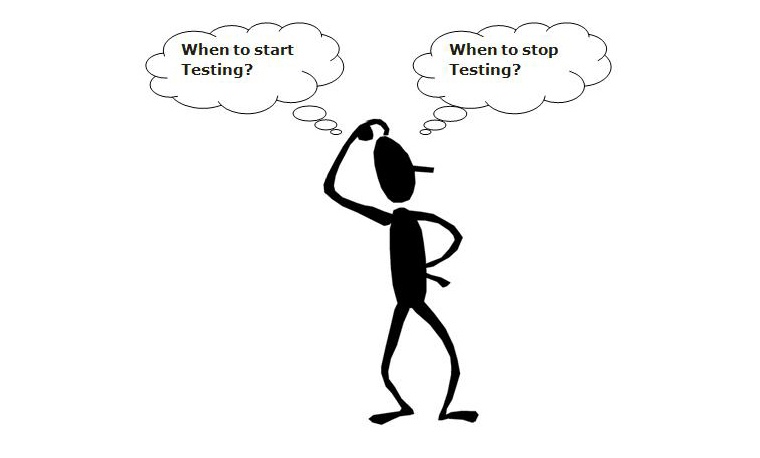
The 6 phases of the Software Testing Life Cycle are as follows:
- Requirement Analysis
- Test Planning
- Test Case Development
- Test Environment Setup
- Test Execution
- Test Cycle Closure
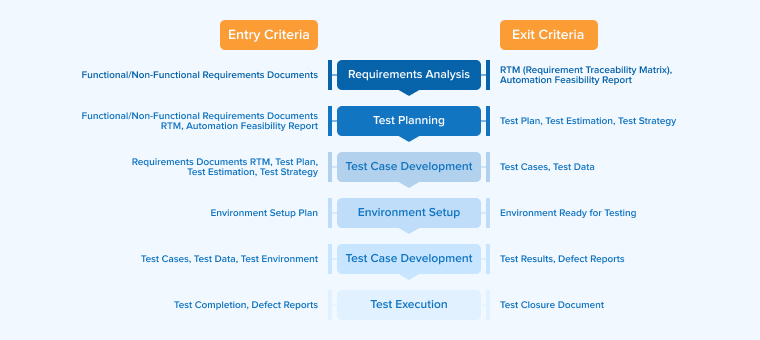
The stages mentioned in the coming section have specific entry and exit criteria, activities & deliverables associated with them. All the required documents that need to be accomplished before starting the testing phase are given in the entry criteria. When it comes to exit criteria, it defines all the documents that must be completed before testing can be concluded.
Every phase consists of entry and exit criteria which ideally means that we cannot start the next stage until the exit criteria for the previous stage are accomplished. But basically, this is not always possible.
2.1 Entry Criteria
Entry criteria is a phase that means that the testing team must address it before they start the testing process. This phase comes with requirements that are mandatory to cross off. It shows the conditions and activities that are present before STLC and they need to be fulfilled.
2.2 Exit Criteria
Exit criteria is a phase that needs to be addressed after the completion of the testing process. This means that it specifies some actions and requirements to be crossed off the task list to complete the STLC. Before that, the testing may come to a pause. Essentially, exit criteria include high-quality defect identification that needs to be fixed right away to have a perfectly successful STLC.
3. Software Testing Life Cycle (STLC) Phases
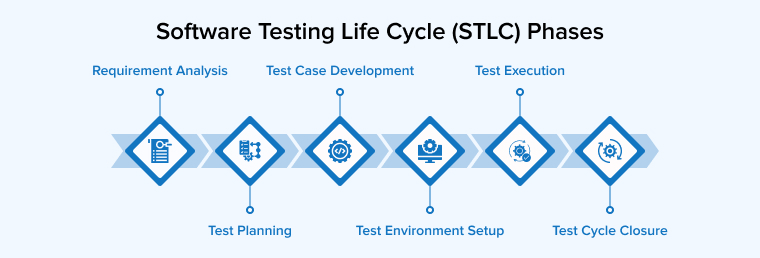
There are 6 phases of the Software Testing Life Cycle as follows:
3.1 Requirement Analysis
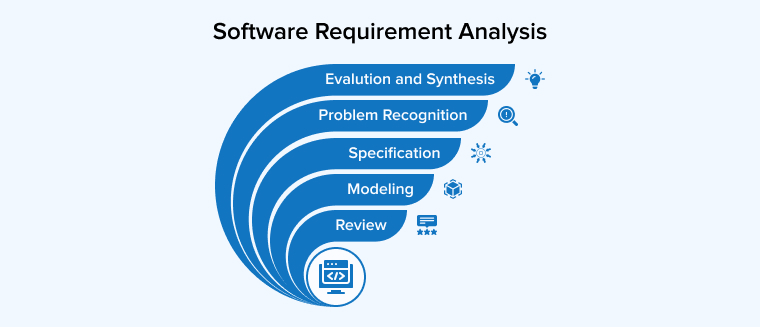
The first phase of STLC is requirement analysis. The accessible specifications and requirements must be seen, studied, and analyzed by the testing team. The test case development phase needs to be clearly defined to meet the test closure report and standards.
In the requirement analysis phase, you will start providing input data and some need to create results. These are requirements that can be tested. Testers examine both the functional and non-functional requirements. If they follow that, they must choose testable requirements. In this phase, you need to understand whether your app is in an ideal state or not. Then check the feasibility with automated testing or manual testing, whichever is suitable as per the plan.
Entry criteria:
The software requirement specification (SRS) is a crucial document for the requirements phase. The analysis of testing needs should begin with a review of the flaws document. The testing methodology, test settings, and test items are all analyzed by the quality assurance team. Functional and non-functional requirements call for different types of testing. We also need a report detailing the architecture of our apps and programs.
Exit criteria:
A requirement traceability matrix (RTM) is a document that must be completed as part of the final exit criteria of the requirement analysis phase. When testing is complete, the RTM document guarantees that all requirements have been verified using test cases.
Activities to consider during the phase
- Analysis of the software requirements specification (SRS) and associated paperwork.
- Stakeholder interviews for more information.
- Locating any confusing or contradictory criteria.
- Finding out what has to be done that hasn’t been done yet.
- Locating any problems that might arise during testing and documenting them.
Deliverables of Requirement Analysis Testing
- RTM
- Report on the Potential of Automation
Once you get the requirements clear, it is time to move on the test plan.
3.2 Test Planning
The QA team proceeds to the second phase, test planning, after assessing all of the essential testing requirements. Once they have a comprehensive understanding of the product domain, they define the scope and objectives.

The team creates a test plan by analyzing the risks and defining time schedules and testing environments. Team must finalize the software testing tools and assign the roles and duties to the resources. Now, they can manage the entire testing process in a single test plan document that will describe the agenda of each test scenario and check if the test results of each part are met or not in the software testing process.
Entry criteria:
The requirements document and the requirements traceability matrix will be used as entrance criteria for the test planning phase. It is also necessary to have a test automation feasibility report.
Exit criteria:
Documents such as the “test plan,” “test strategy,” “test effort for time and cost,” and “resource planning” serve as “exit criteria.”
Activities to consider during the phase
- Defining the goals and parameters of the test.
- Choosing testing approaches and procedures is part of developing a test strategy.
- Locating the required testing infrastructure.
- Determining which tests will run and the data to be used for those tests.
- Compute how long and how much it will cost to conduct tests.
- The testing milestones and deliverables must be determined.
- Determining who is responsible for each task within the testing team.
- Approval of the test strategy following review.
Deliverables of Test Planning
- Test strategy and plan
- Work Effort Documentation
3.3 Test Case Development
Testers create and develop test cases based on the test plan. These test cases should be comprehensive and cover almost all possible scenarios. The business must be able to prioritize these test cases by identifying which are the most common and which would have the most impact on the product. In the documentation step, the defined requirements are verified and validated. The validation and verification process checks all the required sequences, updates define the pipeline of how the test team will interact. Then, based on test cases, they apply the testing strategy.
Entry criteria:
The test plan and test strategy document, which have been properly completed, are the admission criteria for the test case development. In addition to allocating the resources, the resource planning document will also be revised. Furthermore, a report analyzing the results of automated tests will also be generated.
Exit criteria:
A starting point is established after reviewing and analyzing all test cases and test scripts.
Activities to consider during the phase
- Produce test scripts and test cases.
- Take a look at the test cases and scripts.
- If a test environment can be utilized, generate test data.
Deliverables of Test Case Development
- Test cases/scripts
- Test results
Here is what Kaveri tweeted about Test Case Development.
3.Test case development
— kaveri (@kaveri04) July 30, 2022
In this phase QA team designs the test cases , test case review is done by peers and other concerned team members pic.twitter.com/25dSRkFUIT
3.4 Test Environment Setup
For executing approved test cases, testing activities require specific environmental elements, such as servers, frameworks, hardware, and software. The major components of the test environment phase include software and hardware configuration and test data preparation.
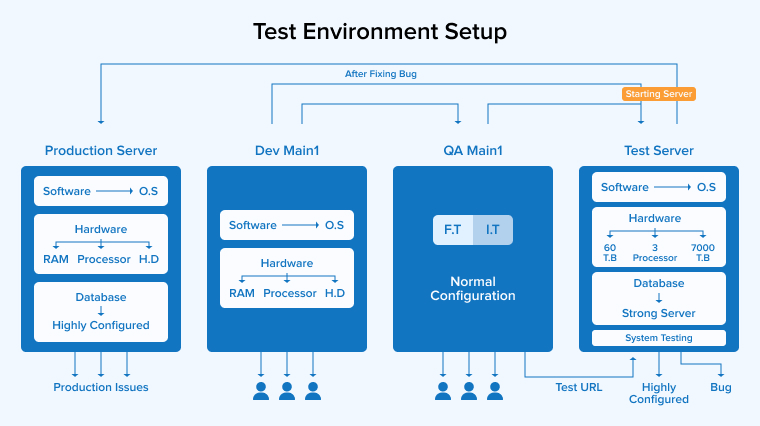
The test team studies all the requirements for testing before providing problem-reporting tools to the testers. The testing environment details will showcase the specific configuration setup needed for each case.
Entry criteria:
The entrance criteria for this phase include the test plan, smoke test cases, and test data details. During this stage, documents for the application’s layout and the system’s architecture are prepared.
Exit criteria:
Smoke test results and a test environment setup document with current test data are needed before proceeding to the next phase.
Activities to consider during the phase
- Test data should be produced.
- A test environment checklist should be made, and the required hardware and software must be acquired.
- The network infrastructure and a staging server are now ready for use.
- The steps required to set up and manage a test environment details.
- Smoke tests are performed to ensure that the environment is prepared.
Deliverables of Test Environment Setup
- The setting is prepared, and test data is in place.
- Smoke Test Results.
3.5 Test Execution
When the test team has completed all of the preceding steps, the application is ready for testing. The testers carry out test cases following the test plan. They also report problems by identifying, detecting, and logging flaws. The testing team is also in charge of comparing predicted results to actual results. If any issues are discovered, they must recorded in order and forwarded to the development teams for a fix. Regression testing ensures that the software or application continues to function even after the modifications have been made. After fixing a problem, it is important to retest the entire product. It’s also advised to use test automation scripts or automated testing tools because the same tests must be run again after each change and release.
Entry criteria:
The test environment setup document, test cases document, test plan document, and test data document serve as the entrance criteria for the text implementation phase. Three types of test reports are generated: unit, integration, and system.
Exit criteria:
Once the execution is complete, a test execution report is generated. The development team is given a full defect report that includes information about the resolved issues, the test cases utilized, and the found problems.
Activities to consider during the phase
- Test cases are run by the test plan.
- Examining the actual results vs the predicted ones.
- Finding and identifying problems.
- Noting problems and sending a report of any bugs discovered.
- Fixing bugs and upgrading the requirements traceability matrix.
- Testing again once an issue has been fixed by the development team.
- Regression testing (if needed).
- Monitoring a problem until it is resolved.
Deliverables of Test Execution Phase
- Finalized RTM with the status of the execution.
- Result updates for all test scenarios.
- Reported Defects.
3.6 Test Cycle Closure
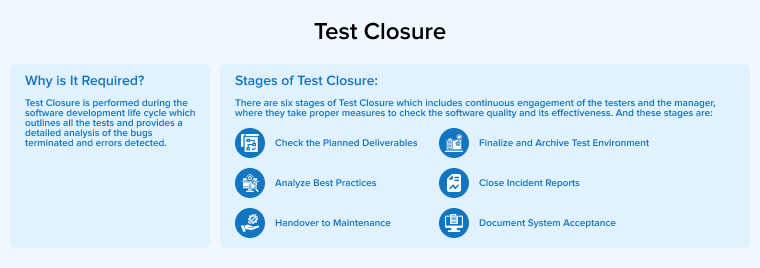
This last phase of this cycle is to bring test closure to the test execution phase where we prepare a test closure report. The test closing phase begins when the test execution is completed and the final product is delivered. The QA team examines the test findings and confers with the rest of the team. Product quality, test coverage, and project cost are among the key criteria they evaluate. If there is a difference between the estimated and actual numbers then the tester has to go back to the procedures and check, analyze, and correct them.
Entry criteria:
The entrance criteria for this last stage will be test execution and problem reports.
Exit criteria:
The test metrics report and the test closure report must be authorized by the customer as part of the final phase’s exit criteria.
Activities to consider during the phase
- Time, Test service, expense, the software, important Business goals, and quality should all be considered when you analyze the criteria for cycle completion.
- Create test metrics using the above criteria.
- Record any insights gained from working on the project.
- Finish the test report.
- Updating the work’s quality to the client in both qualitative and quantitative terms.
- The examination of test results to determine the prevalence of various types and levels of flaws.
Deliverables of Test Cycle Closure
- Test Closure report
- Test metrics
4. Difference Between STLC(Software Testing Life Cycle) and SDLC(Software Development Life Cycle)
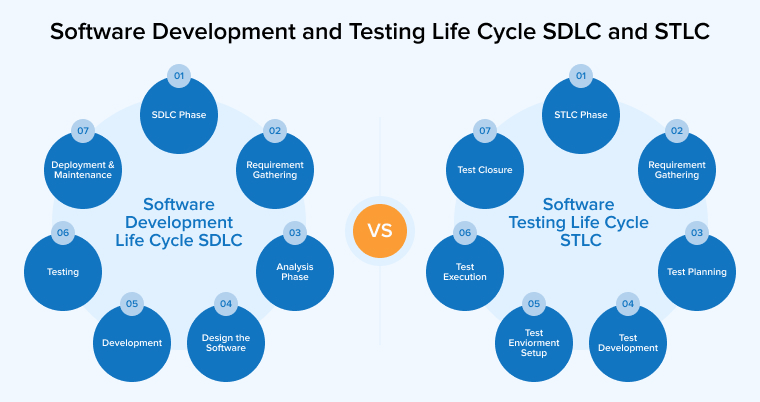
| Key Parameter | Software Development Life Cycle (SDLC) | Software Testing Life Cycle (STLC) |
|---|---|---|
| Aim | The Software Development Life Cycle (SDLC) is designed to create a system that meets superior quality, surpassing customer expectations. It should function optimally in the existing and future information technology infrastructure, while also being affordable to maintain and cost-effective to improve. | The Software Testing Life Cycle (STLC) determines the specific test activities to be performed and their respective timing. While testing practices can differ among organizations, there is a standardized testing life cycle. |
| Main Concern | Emphasizes the development of a software application. | Emphasizes the testing of the software program. |
| Development Steps | The process includes requirement gathering, analysis, design, coding, testing, deployment, and maintenance. | The process includes requirement analysis, test planning, test design, environment setup, test execution, and test closure. |
| Quality Contribution | Promotes the development of software of high quality. | Assists in eliminating software vulnerabilities. |
| Requirement Gathering Phase | The business analyst collects the necessary information and formulates a development plan. | The QA team analyzes requirement documents and prepares a System Test Plan. |
| Dеsign and Planning | Generates both high-level and low-level design blueprints based on the information provided by the development team. | Develops the integration test plan. The responsibility of creating the strategy usually falls on test analysts. |
| Responsibility in Development | Gathers requirements and develops features. | Designs tests for these specifications and verifies functionalities. |
| Completion of Phases | Before testing, all phases of the SDLC are finished. | Following the completion of the Software Development Life Cycle (SDLC) phases, the Software Testing Life Cycle (STLC) phases start. |
| Ultimate objective | Provides a software system of excellent quality and usability. | Identify and report software defects for the development team to resolve. |
5. STLC Phases In Tabular Form
| STLS Phase | Entry Criteria | Exit Criteria | Deliverables |
|---|---|---|---|
| Requirement Analysis |
|
|
|
| Test Planning |
|
|
|
| Test Case Development |
|
|
|
| Test Environment Setup |
|
|
|
| Test Execution |
|
|
|
| Test Cycle Closure |
|
|
|
6. Software Testing Life Cycle Best Practices
To guarantee a successful and effective implementation of STLC, it is advisable to use the following best practices:
- Early participation of the testing team: Involve the testing team from the beginning of the development phase to improve their clarity on project requirements and allow prompt identification of issues.
- Conduct a thorough analysis of the requirements: Learn software requirements comprehensively and assess accuracy and reliability.
- Continuous cooperation among teams: Promote transparent communication and cooperation between the development and testing teams to guarantee an easier and more effective testing procedure.
- Design effective test cases: Develop precise and thorough test cases that encompass a range of scenarios and employ advanced techniques such as equivalence partitioning and boundary value analysis.
- Establish a representative testing environment: Create a consistent and reliable environment that closely resembles the actual production setup, guaranteeing the presence of essential hardware, software, and settings.
- Follow best practices and industry guidelines: Ensure industry standards by employing recognized testing procedures, techniques, and tools in your testing process.
- Periodic review and assessment: It is recommended to continuously update your testing process by incorporating insights learned from past projects to increase effectiveness and productivity.
7. Conclusion
In this post, we have seen how STLC works. We have given a comprehensive overview of how the software testing life cycle is different from the software development life cycle, what is the difference, and what is its agenda. A good testing method boosts business results and thus, we highly advise businesses to keep their eyes on the testing while it’s sure they will get profitable results with STLC.


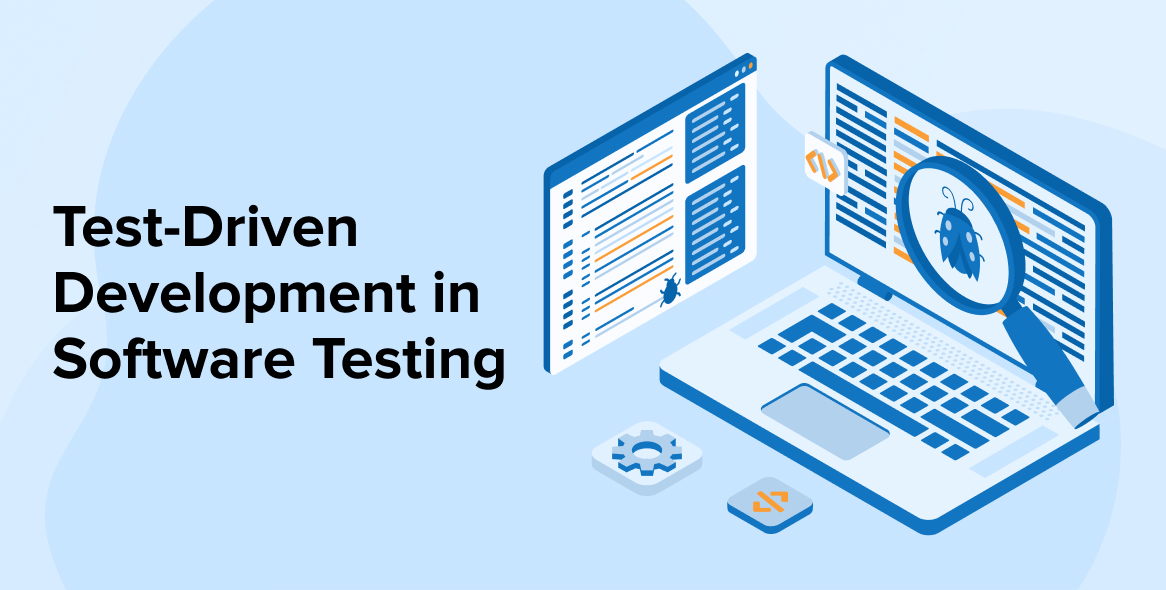
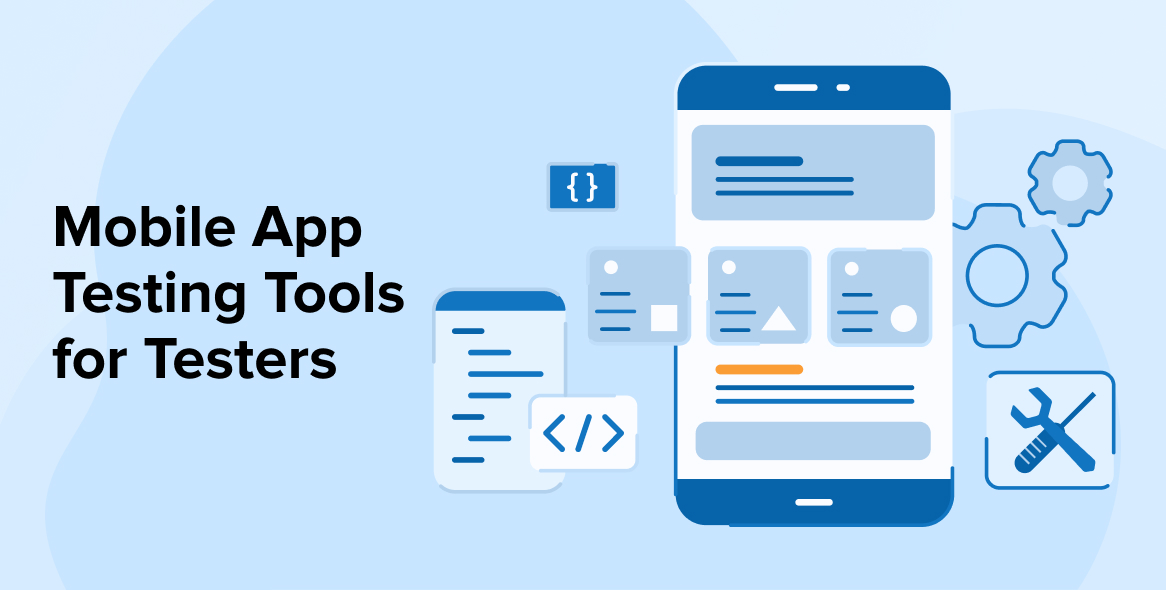
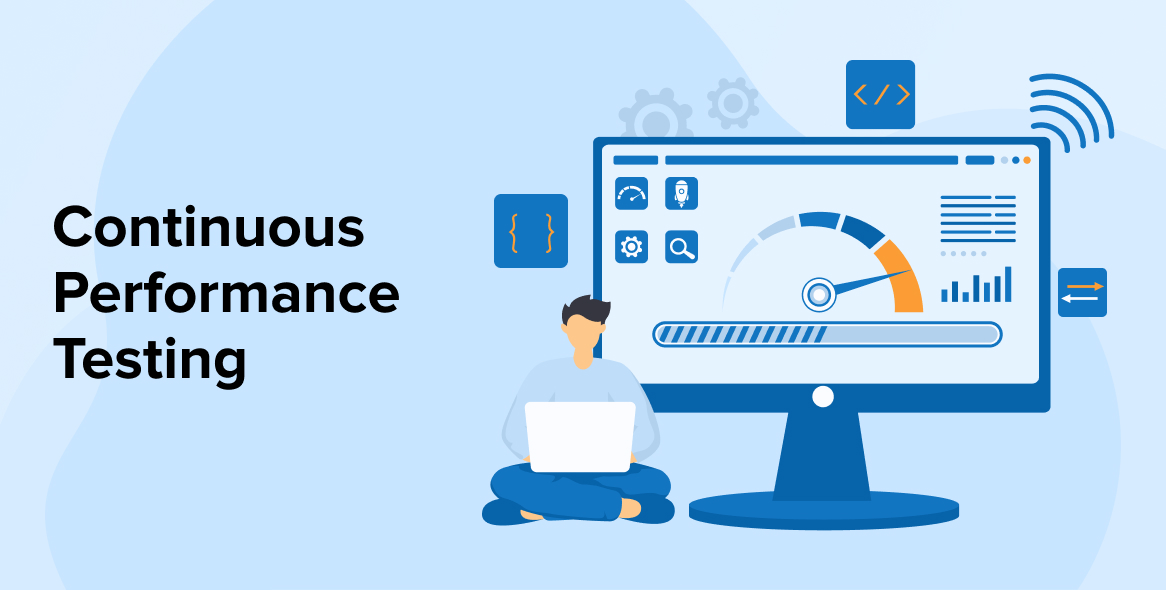

The software testing life cycle is a part of the software development life cycle. Which involves requirement analysis, test planning, test case development, test environment setup, test execution, and test cycle closure that ensure the software is thoroughly tested before release. Thank you for sharing this informative article with valuable resources. Sure, I will implement these practices in my upcoming project.
Great article! This article provides an overview of the software testing life cycle. It covers the different types of tests that can be performed, and provides tips for choosing the right software testing tools and techniques for a software product.
Nice way to represent this article, I really appreciate it. But I would like to suggest that if you want to make it even better, you could provide more details on the following: - Types of software testing - Writing of test cases - Some important testing tools - And many more